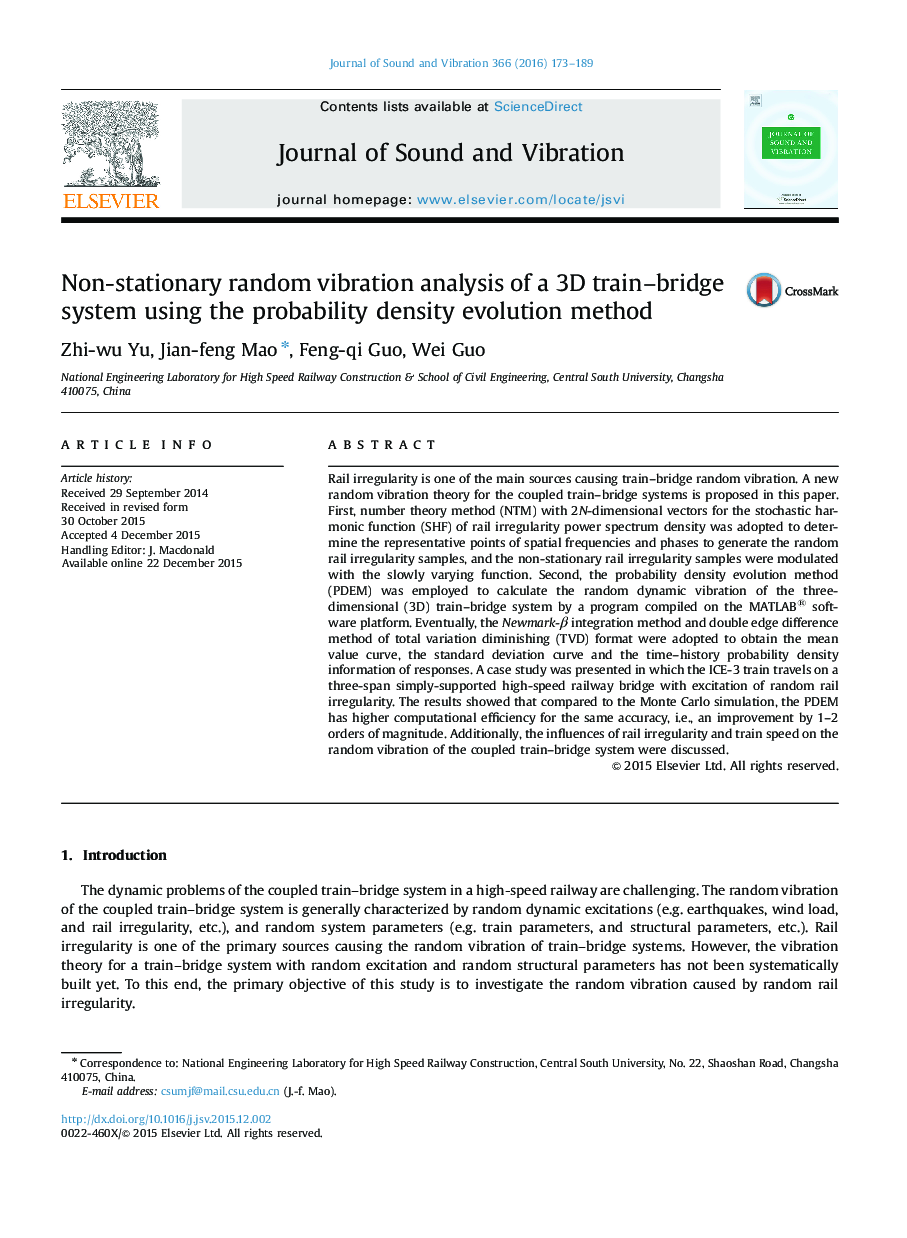| Article ID | Journal | Published Year | Pages | File Type |
|---|---|---|---|---|
| 287088 | Journal of Sound and Vibration | 2016 | 17 Pages |
Rail irregularity is one of the main sources causing train–bridge random vibration. A new random vibration theory for the coupled train–bridge systems is proposed in this paper. First, number theory method (NTM) with 2N-dimensional vectors for the stochastic harmonic function (SHF) of rail irregularity power spectrum density was adopted to determine the representative points of spatial frequencies and phases to generate the random rail irregularity samples, and the non-stationary rail irregularity samples were modulated with the slowly varying function. Second, the probability density evolution method (PDEM) was employed to calculate the random dynamic vibration of the three-dimensional (3D) train–bridge system by a program compiled on the MATLAB® software platform. Eventually, the Newmark-β integration method and double edge difference method of total variation diminishing (TVD) format were adopted to obtain the mean value curve, the standard deviation curve and the time–history probability density information of responses. A case study was presented in which the ICE-3 train travels on a three-span simply-supported high-speed railway bridge with excitation of random rail irregularity. The results showed that compared to the Monte Carlo simulation, the PDEM has higher computational efficiency for the same accuracy, i.e., an improvement by 1–2 orders of magnitude. Additionally, the influences of rail irregularity and train speed on the random vibration of the coupled train–bridge system were discussed.
